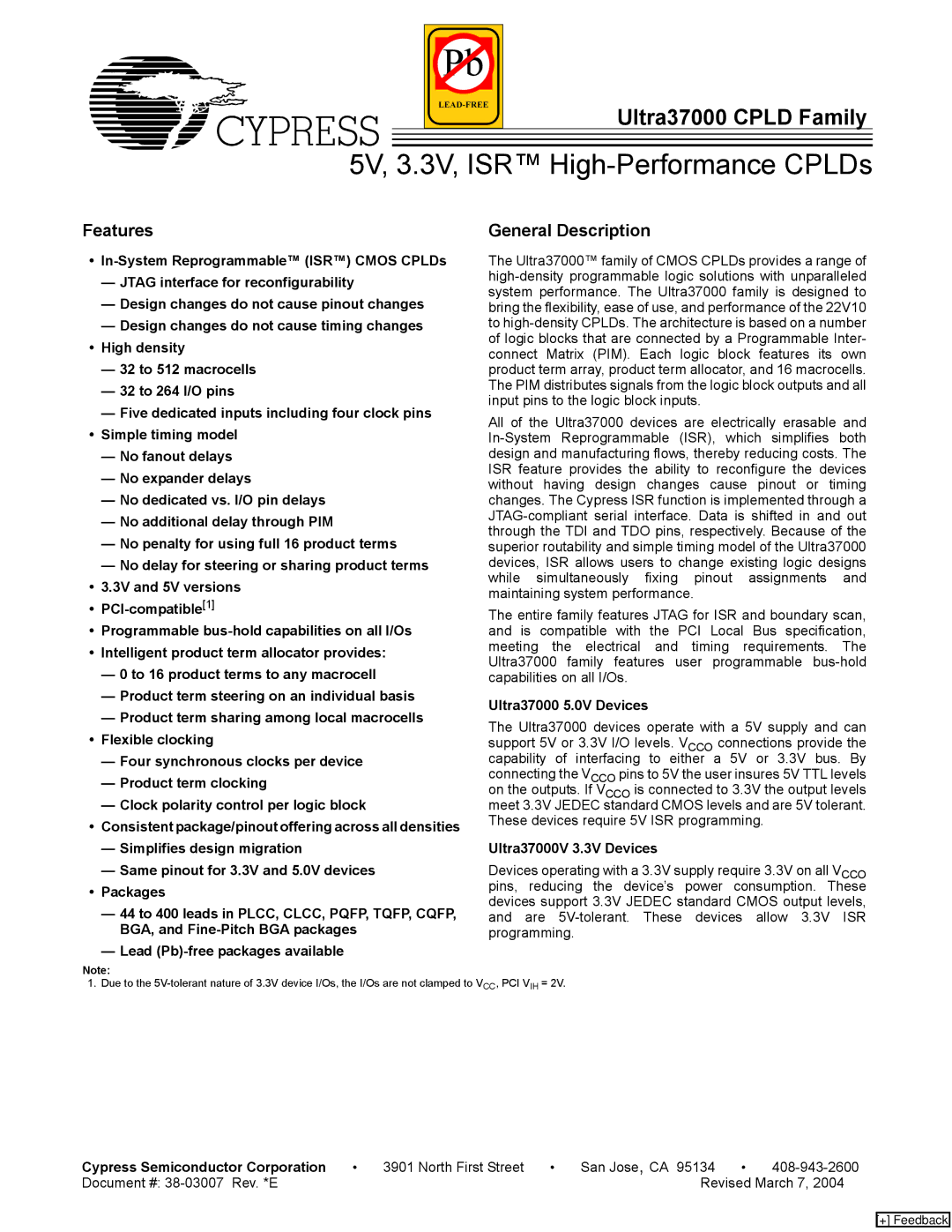
Ultra37000 CPLD Family
5V, 3.3V, ISR™ High-Performance CPLDs
Features | General Description |
•
—JTAG interface for reconfigurability
—Design changes do not cause pinout changes
—Design changes do not cause timing changes
•High density
—32 to 512 macrocells
—32 to 264 I/O pins
—Five dedicated inputs including four clock pins
•Simple timing model
—No fanout delays
—No expander delays
—No dedicated vs. I/O pin delays
—No additional delay through PIM
—No penalty for using full 16 product terms
—No delay for steering or sharing product terms
•3.3V and 5V versions
•
•Programmable
•Intelligent product term allocator provides:
—0 to 16 product terms to any macrocell
—Product term steering on an individual basis
—Product term sharing among local macrocells
•Flexible clocking
—Four synchronous clocks per device
—Product term clocking
—Clock polarity control per logic block
•Consistent package/pinout offering across all densities
—Simplifies design migration
—Same pinout for 3.3V and 5.0V devices
•Packages
—44 to 400 leads in PLCC, CLCC, PQFP, TQFP, CQFP, BGA, and
—Lead
Note:
The Ultra37000™ family of CMOS CPLDs provides a range of
All of the Ultra37000 devices are electrically erasable and
The entire family features JTAG for ISR and boundary scan, and is compatible with the PCI Local Bus specification, meeting the electrical and timing requirements. The Ultra37000 family features user programmable
Ultra37000 5.0V Devices
The Ultra37000 devices operate with a 5V supply and can support 5V or 3.3V I/O levels. VCCO connections provide the capability of interfacing to either a 5V or 3.3V bus. By connecting the VCCO pins to 5V the user insures 5V TTL levels on the outputs. If VCCO is connected to 3.3V the output levels meet 3.3V JEDEC standard CMOS levels and are 5V tolerant. These devices require 5V ISR programming.
Ultra37000V 3.3V Devices
Devices operating with a 3.3V supply require 3.3V on all VCCO pins, reducing the device’s power consumption. These devices support 3.3V JEDEC standard CMOS output levels, and are
1. Due to the
Cypress Semiconductor Corporation | • | 3901 North First Street | • | San Jose, CA 95134 | • | |
Document #: |
|
|
| Revised March 7, 2004 | ||
[+] Feedback
